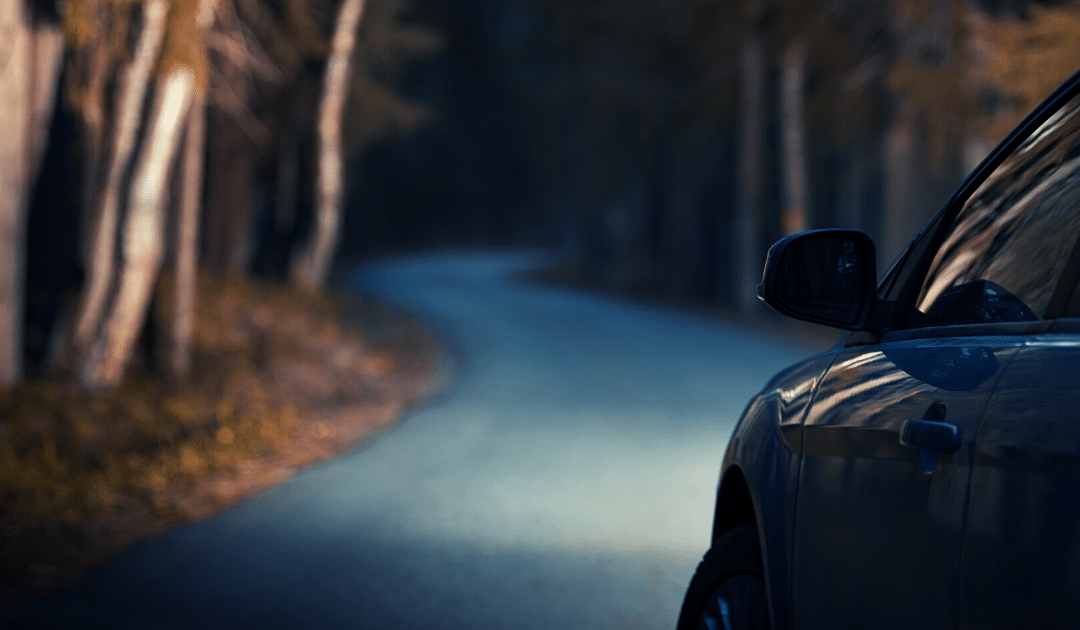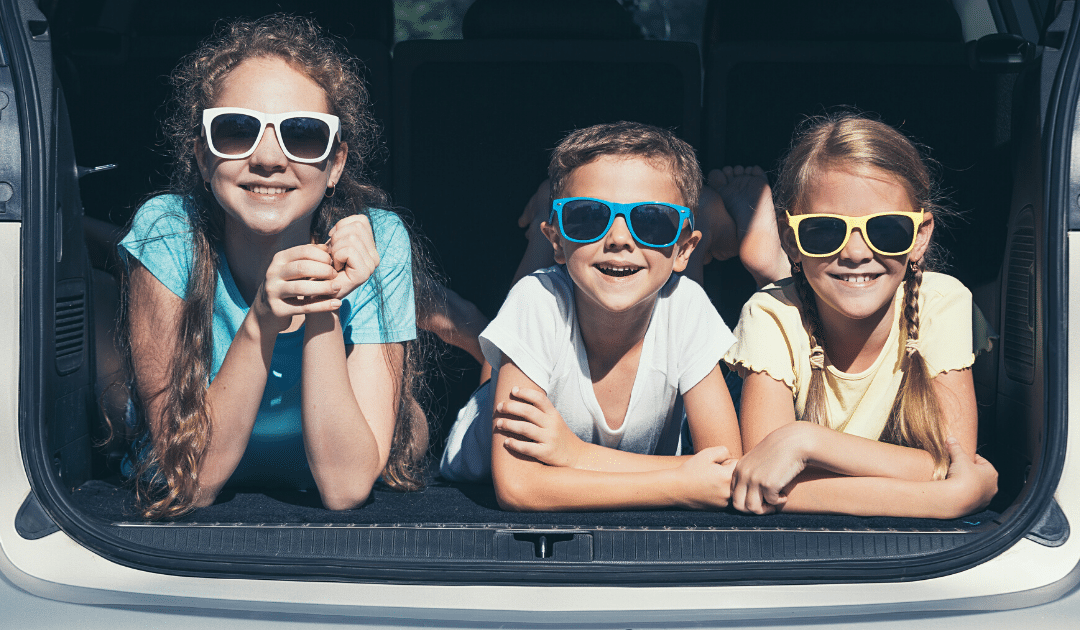
by California Casualty | Finances, Homeowners Insurance Info |
Purchasing a home is an extremely exciting adventure in the life journey – in fact, more than anything it might represent achieving the American dream. For all the excitement though, it can be confusing, challenging, and stressful. And even for those who’ve done it before, today’s real estate and credit markets are significantly different from even five years ago.
So, whether you’re embarking on this journey as a first-time home buyer, taking advantage of record-low interest rates, or just planning on downsizing or upgrading, follow our guide to help get you in great home-buying shape.
Phase 1: Prepping and Planning
1. Decide how much you can afford – If you’re like many, your home is the largest purchase you’ll ever make – so the biggest question is around how much you can comfortably afford. This is determined according to your income, debt, credit score, location, and more. Then there’s the down payment, for which you’ll probably need to have a savings plan to reach (typical amount is 10-20% of the home value). You can use a home affordability calculator or, better yet, talk to a financial planner.
2. Put your financial ducks in a row – You’ll want to be in good financial shape before house shopping. That means paying off all or most of your debt and making sure you have an emergency fund. The latter will be helpful for those unexpected expenses you’ll have as a new homeowner (that you didn’t have to worry about as a renter!). You’ll also want to save for closing costs (typically 2-5% of loan amount), moving expenses, repairs, and other various expenses.
3. Strengthen your credit – Your credit score affects what loans you will qualify for, so you want it as strong as possible. Get free credit reports from Experian, Equifax, and TransUnion and make sure there aren’t any errors. Then build your score by making sure to pay all bills on time and keeping card balances low. If you don’t have much credit history, quickly start building your score by putting a utility bill or two in your name and staying current on your payments.
4. Educate yourself – Get familiar with all the steps of the process, including all the costs along the way and the people who will be involved. Your main contact (and person working on your behalf) will be your real estate agent, but you will/may also be working with a seller’s agent, broker, loan officer, underwriter, appraiser, listing agent, loan servicer, home inspector, and others.
5. Work with recommended professionals – The most important of these is your real estate agent, who will be representing you and your interests through the process. Ask for recommendations in your circle. Pro tip: You may get referrals to “real estate agents,” “realtors,” and “real estate brokers.” What’s the difference? The first is a licensed professional representing buyers or sellers, the second is a real estate agent who’s a member of the realtors’ association, and the last generally has more training and may work independently or have their own firm.
6. Explore your mortgage options – You can go with all kinds of lenders – all of which have a different down payment and eligibility requirements. Make sure you look at the range of loans, including conventional mortgages as well as loans offered by the FHA, USDA, and VA. As a first-time homebuyer, be sure to research federal or local assistance programs for your buying cohort – they typically offer advantages and savings not offered to other home buyers! After your research, carefully compare the different loan fees and rates.
7. Get pre-approved – After you’ve chosen a preferred lender, apply for pre-approval. Having a pre-approval letter (which specifies the lender’s offer amount) shows real estate agents and home sellers that you’re serious about buying, which can put you at the front of the bidder line.
Phase 2: House Shopping
8. Research the area – Smart buyers don’t make buying decisions based on the property and house alone. Make sure you thoroughly research the neighborhood (visiting it at different times and days) and think about proximity to schools and workplaces. Research crime rates and consider traffic congestion and freeway access. Also, know the value of homes in the area – a price per square foot average is a great yardstick for making sure you don’t end up paying over market value.
9. Go to open houses – The pandemic has made online home-viewing easier than ever. Take advantage of 3D home tours, which will let you filter out homes that don’t fit your needs. From there, you can attend in-person open houses only at those homes you’re most interested in.
10. Get an inspection – Paying for a home inspection is money well spent and can save you very expensive headaches down the road. A typical inspection covers things like structural elements, grounds, attic, heating and cooling systems, roof, exterior surfaces, basement, insulation, electrical system, and all other parts of the home.
11. Make an offer – Once you’ve found the home you want and can afford, you’ll make an offer to the seller. If you’re not sure how much that should be, lean on your agent for their expertise! They can also help guide you through any negotiating (on say, repairs) or other terms or conditions. Finally, a personalized offer letter never hurts!
12. Know the market – You may be buying in a seller’s market, a buyer’s market, or somewhere in between. Knowing the larger marketplace will help ensure you don’t over-or underbid (again, your agent should be your guide here!). If the market is especially hot you’ll be competing against lots of other offers – know your top price going in so that you don’t get saddled with debt you can’t afford.
13. Get adequate home insurance – Your lender will require homeowners insurance, so start shopping for coverage early (at least 30 days before closing). Get quotes and make sure you understand what’s covered, what’s not, what the terms are, and any additional coverage your home may need. Have questions? Give us a call – we offer special benefits to educators, firefighters, nurses, and peace officers!
Congratulations on embarking on the exciting home-buying journey! With a little extra effort, a plan, and a solid understanding of the process, you’ll be settled into the home of your dreams in no time.
This article is furnished by California Casualty, providing auto and home insurance to educators, law enforcement officers, firefighters, and nurses. Get a quote at 1.866.704.8614 or www.calcas.com.

by California Casualty | Safety |
All across America, people are missing their extended families – and now even more so with Thanksgiving and the holidays quickly approaching. What we’ll miss most this November are the warm hugs, embraces, and cheek kisses; passing dishes around the table; and piling on the couch with overstuffed, yet happy, bellies.
Many are skipping large gatherings this year, in favor of smaller dinners with only household guests. If you’re hosting a small family dinner this year, you may be wondering how to balance safety with the traditions that make Thanksgiving so special.
See the tips below for striking that balance and answering some common safety questions.
Can I have a Normal Thanksgiving?
Thanksgiving may look a bit different this year for many different families. States all across the country have enforced strict guidelines limiting gatherings of more than 10 people and encouraging families to cancel their plans. However, millions of people still flocked to the airport this weekend to travel in preparation for the holiday.
So, should your Thanksgiving look normal this year? Yes and no. For some it is best to cancel, for others who don’t want to break tradition, it is best to limit your gathering to just immediate family (those in your household) or at least keep it under 10 people and have a small Thanksgiving. However, that will not change the food, or the laughs, or the memories you will make. Encourage relatives that are staying home and cooking their own meals this year to Facetime or Zoom in, so you can all still enjoy the holiday “together” while staying safe.
How Can I Keep My Small Gathering Safe?
For those who are making the decision to continue on with a small gathering, hosts will be doing more work this year- that’s for sure. But with some planning and attention throughout the evening, you can serve a meal your guests will love and keep everyone safe in the process.
-
- “Small Gathering” Must Mean Small Gathering. Only immediate family or no more than 10 people.
- Lay the Ground Rules. As the host, you’re the one who sets the tone about safety. Remember that having safety measures doesn’t mean your holiday needs to be any less warm or wonderful.
- Plan Ahead. If you are including a few family members outside of your household, send safety expectations ahead of time, to give people time to plan and adjust. Make sure everyone knows and agrees to the rules. Remind them that the precautions are meant to protect them and those they love, and if they would not like to follow them, they can stay home.
- Sanitize Ahead of Time. Disinfect surfaces in bathrooms and common areas. Provide disposable paper towels instead of cloth ones. Put out multiple bottles of hand sanitizer to remind people to use them.
- No Ifs, Ands, or Buts. If anyone in your household becomes sick or is exposed to the virus beforehand, the dinner must be called off – this goes for you as host as well as for guests.
- Social Distancing and Safety from the Get-Go. If you invite family outside of your household, remember to maintain social distance inside of your home and to avoid kissing, touching, and handshakes. Guests should also wear facemasks whenever possible (supply a box of surgical masks).
- Be the Designated Server. To cut down on cross-contamination, hosts should serve all food and drink (and be masked while doing so). If dinner has to be served buffet-style, make sure everyone sanitizes before going through the line.
- Go Compostable. Consider disposable and compostable paper plates, napkins, utensils, and cups to reduce the chances of transmission.
- Dine Outdoors if Possible. By now we know that dining outdoors versus indoors greatly reduces the chances of transmission, so if possible, plan for that.
- If Inside- Space Out. If circumstances necessitate an indoor event, plan your gathering in a large room, spacing tables, and chairs apart. Open windows (have lap blankets available) to bring the fresh air in. Or you can set up multiple tables and have relatives eat in different rooms.
- Mind the Alcohol. We all know alcohol lowers inhibitions and can change behavior. If folks begin to mingle, bunch together, or wander the house, remind them about social distancing. Use markers for wine and cocktail glasses so everyone keeps their own glass. Hosts should pour/serve drinks rather than lots of people handling the bottles.
Should People Be Tested Beforehand?
One of the things that makes the pandemic so frustrating is the difficulty around knowing for sure whether any of us is carrying the coronavirus. Part of that is due to issues around testing: the time lag between test and results, the false negatives, and even the lack of available testing in some places.
If family members coming to your dinner (or children that have been away at school) would like to get tested beforehand- encourage them to. This way you can all have a little piece of mind when sitting down at the dinner table. Even if everyone tests negative, still emphasize masking, handwashing, social distancing, and other proven preventive measures you can take as host.
At the end of the evening, remember to load glasses and any ceramic dishes in the dishwasher on high heat and sanitize all surfaces, doorknobs, and handles.
Should I Feel Bad for Canceling?
And finally, don’t feel bad for canceling or having to uninvite guests that usually come to your Thanksgiving feast. If you have any fears at all, or become overwhelmed with stress/anxiety about the day- don’t be afraid to cancel. This is a very crazy time (to say the least) and family members will likely understand. The health and safety of you and your immediate family should always be your number one priority.
Stay safe and have a happy Thanksgiving.
This article is furnished by California Casualty, providing auto and home insurance to educators, law enforcement officers, firefighters, and nurses. Get a quote at 1.866.704.8614 or www.calcas.com.

by California Casualty | Auto Insurance Info |
When daylight savings ends and our days become shorter, motorists will find themselves driving more often at dusk and in the dark.
As we turn our clocks back, it’s important to keep in mind that night driving is more dangerous than daytime driving – mostly due to reduced visibility and difficulty judging speed and distance. In fact, according to the National Safety Council, while we do only one-quarter of our driving at night, it’s when 50 percent of traffic fatalities occur.
Here are five ways you can stay safer on the roads at night.
1. Be Headlight Savvy
Proper headlight usage and maintenance will go a long way toward safe night driving. Remember the general rule of turning headlines on before sunset, and keeping them on for an hour after sunrise, which will help other drivers see you. Also:
-
- Aim headlights correctly (ask your dealer or mechanic/repair shop to double-check them next time you’re in).
- Make sure they’re clean.
- Regularly test your high beams, low beams, running lights, turn signals, and brake lights.
- On rural roads or other dark areas, use high beams. Dim them when you’re within 500 feet of an oncoming vehicle.
2. Slow Down and Give Room
Due to reduced visibility, drivers at night often need more time to both see other cars, pedestrians, and obstacles, and also to react safely. Give yourself the advantage by slowing down a bit and also giving yourself some extra room on the road.
-
- Increase your following distance from other vehicles.
- Allow more time for your journey.
- Be a(n extra) defensive driver, as others may be intoxicated or driving erratically.
- Watch out for pedestrians and wildlife. For the latter – collisions with deer are most common at dusk or at night, usually October through January (see our 30-second video on what to do if you hit a deer).
3. Give Your Car’s Interior a Once-Over
A little extra attention inside your vehicle can greatly affect how you see and react to things outside your car.
-
- Clean the windshield – inside and out – removing all streaks, smudges, and fogginess.
- Clean the other windows as well to reduce glare and condensation.
- Use your car’s defroster or heater to prevent your windshield from fogging up.
- Dim your dashboard lights so controls are still visible but not distracting.
- Use visors to shield the glare of outdoor street lighting.
- Avoid using cabin lights as much as possible when driving at night.
4. Stay Alert
Two big risks on nighttime roads are drunk driving and drowsy driving. Always remember and stay alert for other drivers who may be impaired due to alcohol, fatigue, or distraction. For yourself, never drive intoxicated and use the tips below to keep yourself alert.
-
- Take breaks if you need to – get out and do jumping jacks, shake out your limbs, stretch, take some deep breaths.
- If you’re on a long trip, try these things to stay awake: coffee or caffeinated drinks, windows rolled down for fresh air, talking, or singing to yourself.
5. Be Kind to Your Eyes
You can take steps, both in the moment while night driving, and in the longer term to take care of your eyes so they can take care of you on the road.
-
- Make sure you get your eyes checked regularly, which will alert you to any vision changes. If you wear prescription lenses, you may need a different prescription at night.
- Make sure your glasses are anti-reflective.
- Never wear dark or tinted lenses for night driving.
- To protect your eyes from drying out, aim your car’s vents away from your eyes.
- Keep your eyes moist by blinking regularly, especially if you wear contact lenses.
- Don’t look directly at oncoming headlights; instead, look at the road marker to your right until the car passes.
Finally, avoid two-lane highways at night if possible, as they’re especially dangerous. This and the other tips above will help you stay stress-free and safer during nighttime driving.
This article is furnished by California Casualty. We specialize in providing auto and home insurance to educators, law enforcement officers, firefighters, and nurses. Get a quote at 1.866.704.8614 or www.calcas.com.

by California Casualty | Safety |
Power outages can last anywhere from a few hours to days or even weeks. In the latter case, an outage can affect entire communities, disrupting communications, transportation, and emergency response or health care services. It can also close businesses, banks, gas stations, grocery stores, and other services.
Understanding why and how they happen can help you better prepare. Next, having a plan and taking precautions ahead of time will help you and your family ride out the outage with less stress and a greater sense of control.
When and Why They Happen
Knowing how outages happen can sometimes help you predict when they’re most likely to occur – for instance, during storms or heatwaves. Other times, they’re random and unpredictable.
-
- Weather – Storms and weather events such as high winds, ice, and snow are the most common cause of outages, oftentimes due to trees and limbs taking down power lines. Rain and flooding can also damage above-ground or underground electrical equipment. And earthquakes of all sizes can damage electrical grids.
- Animals – Far and away, squirrels cause the most damage to power lines, but snakes and other critters can prompt an outage by nesting in or climbing on transformers, boxes and other equipment.
- Human Error – Car accidents and digging mishaps — when underground lines are hit — are a common cause. Additionally, electrical overuse during heatwaves and other times of unusually high demand can overburden cables, transformers and other links in the system.
Get Ahead of an Outage with Smart Planning
Planning and preparation are key to making a power outage manageable. There’s no better time than today to get started on the steps below.
Communications
-
- Download the NOAA radio app, your local weather alert app, and any other emergency app of your choice.
- Talk to your medical provider If anyone in your household requires electric medical devices or refrigerated medication. Get guidance on what to do if you lose power.
- Update your phone number and contact information with your electric provider.
Plans and kits
-
- Assemble or update your emergency kit – one for your family and another for your pet(s). Be sure to check and replace all batteries and have fresh back-ups. Also make sure you have COVID-19 supplies such as hand sanitizer, wipes, masks, and gloves.
- Make sure your household evacuation plan is current, and all household members and pets are accounted for.
- Know your local community’s risk and response plans.
- Have a plan, budget, and some extra cash on hand in case power restoration is delayed.
In Your Home
-
- Install surge protectors to help safeguard expensive appliances, computers and entertainment systems.
- Install carbon monoxide monitors with battery backup on every level of your home.
- Have at least a half tank of gas in your car at all times.
- Purchase household and food supplies ahead of time and stash some extras in case of an extended outage.
A Go-To Plan for When the Grid Goes Dark
Ideally, you and your family will have been able to take the above steps before the lights go out. If so, you’ll be ready to put the following strategies into place in order to remain as safe and comfortable as possible during the outage.
Communications
-
- Tune into the NOAA radio on a battery-powered or hand-crank radio, and/or the local radio station for news and weather updates.
- Report the outage immediately to your local power provider (have their info printed out and handy).
In Your Home
-
- Turn off and unplug all appliances, including the air conditioner, water heater, furnace, and water pump, as well as any sensitive electronics. Leave one light on to know when the power’s been restored – this helps prevent a circuit overload when everything comes back online.
- Keep refrigerator and freezer doors closed. Frozen food will stay frozen for 24-48 hours, depending on how full the freezer is. For refrigerated items, after about 4 hours, move perishable items into a cooler with ice (they should remain at 40 degrees Fahrenheit or colder to be safe).
- If using portable stoves or lanterns, only use them in sufficiently ventilated areas.
- Use flashlights instead of candles.
Outside
-
- Report any downed power lines to your electric company. Keep yourself, family, and pets away from downed lines, flooded areas, and debris.
- Avoid driving if you can. Traffic lights will be out and roads will be chaotic and unsafe.
- If you’re operating a generator, follow safety protocols. Never operate it in your home, garage, or other enclosed spaces.
- Check on your neighbors. The elderly and young children are especially susceptible to extreme temperatures.
The length of time it takes to restore power can vary according to the cause of the outage, the extent of damage, and the geographic area affected. Electric companies have detailed plans and procedures for restoration — starting with repairs to damaged power infrastructure, then re-powering critical community services, and finally restoring power to individuals and businesses in order of density.
By following the tips above, you can ride out the worst of it with less stress, knowing you prepared well.
This article is furnished by California Casualty, providing auto and home insurance to educators, law enforcement officers, firefighters, and nurses. Get a quote at 1.866.704.8614 or www.calcas.com.

by California Casualty | Auto Insurance Info, Safety |
Whether summer road trips beckon or you’re resuming more pre-quarantine activities, increased highway time with your tiny-passenger crew means revisiting best practices for safety.
Check out the following tips for keeping kids safe while in your ride. We’ve also gathered some strategies for keeping your car’s interior safe (and clean) from those same tiny passengers.
The Safety Basics
-
- Always use a car seat. Car seats are designed to protect children from injury or death during vehicle collisions, so choosing the right one and installing it properly tops the list. Check the car seat laws in your state here, and refer to the National Highway Traffic Safety Administration for an in-depth guide on car seats and booster seats.
- Activate child locks to prevent any dangerous mishaps with children accidentally opening doors.
- Use the window locks to keep children from playing with the controls and potentially getting their hand, arm or hair caught in a rolling window.
- Secure safety belts. If there are any unused, loose belts within arm’s reach of your child, secure them so there’s no chance of them becoming an entanglement hazard.
- Never leave a child alone in a car. Not even for a minute. From heat stroke and abduction risk to the possibility of a hit-and-run incident or your child getting loose in the car, the potential of harm is simply too great to chance it.
- Never leave your keys in the ignition or car. Ever-observant, your children have surely seen how you use your keys and, if afforded the chance, could try mimicking your actions.
- Use the back-up camera to avoid hitting children outside your vehicle who may be out of view.
More Child-Proofing
-
- Declutter the car. Any object can become a projectile in an accident, so make sure items are secure or stowed away. Keeping your car clean also decreases the risk of your child grabbing something that might be a choking hazard.
- Use sunshades to protect their delicate skin from harsh UV rays. You can find easy-to-use shades in a variety of shapes, sizes, and styles.
- In-car entertainment. The upside to living in the Age of Screens is that they’re a parent’s best friend in keeping kids distracted and entertained in the car.
- Never drive distracted. Not only does distracted driving endanger you and your children, it sets a bad example for their future driving habits. Eating, texting, inattention, and daydreaming all pull your focus away from the road. So does engaging with your kids in the back seat, which is all the more reason to get everyone set up and settled in before you pull out from the driveway.
- Maintain your vehicle to decrease the chances of overheating, breaking down or getting stranded.
Minimizing the “Mess Orbit” in Your Car
-
- Get a rug or a beach towel to protect underneath the car seat and along the entire seat’s length. It’s easy to remove, shake out, and throw in the washer.
- If you allow food in the car, only allow that which can be vacuumed up (i.e. nothing squishy, mushy or sticky). For liquids, water (in spill-proof cups) tops the list for easiest clean-up.
- Cover the backs of the driver and front passenger seats to protect them from dirty footprints.
- Put cupcake liners in the cupholders to catch those unreachable crumbs.
- Invest in a quality seat protector for leather seats that may become stressed by the car seat’s weight over time.
As with anything else that involves kids, creating habits and routines are often the key to success. When it comes to vehicle safety, adopting best-practice habits will keep your entire crew safer and happier on the road.
This article is furnished by California Casualty, providing auto and home insurance to educators, law enforcement officers, firefighters, and nurses. Get a quote at 1.866.704.8614 or www.calcas.com.





